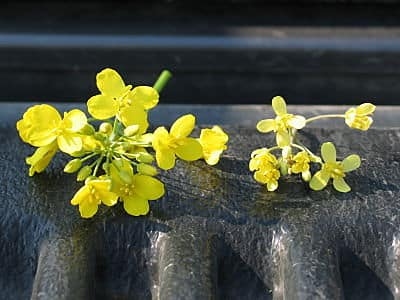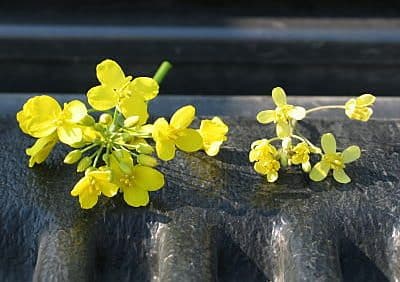
Late sulphur top up. The ideal time for a sulphur top up is any time before flowering, but a top up at early flowering may pay off if plants are showing signs of sulphur deficiency.
Late nitrogen top up. The ideal time for a nitrogen top up is before the 5-leaf stage of canola. This is just before peak nitrogen uptake, so a top up before this stage makes sure nitrogen is in place for when the crop needs it. But AAFC research out of Indian Head, Saskatchewan, shows that nitrogen top dress as late as 5-10% flower can still provide a yield benefit. The benefit may not be as high as an earlier application, but could still be economical. If a field is close to flowering and plants have pale lower leaves and stunted growth that could be attributed to nitrogen deficiency, then a top up may pay off. To determine the likelihood of deficiency, think about the rates put down, possible losses due to high soil moisture levels, and yield outlook for the crop. When making this assessment, consider the possibility that excess soil has stressed roots and inhibited nutrient uptake. In this case, a top up may not provide any benefit if the deficiency is due to inability to access the nutrient rather than insufficient quantities in the soil.
Top dressing and excess moisture. Excess moisture can cause leaching and denitrification, and a top dress may be necessary for the crop to reach its yield potential. However, wait to see how the crop recovers from saturated soils before investing any more in fertilizer. Don’t do anything while soils are still wet — roots cannot take up nutrient when soils are saturated. Applying nutrient direct to leaves doesn’t help. Most foliar-applied nitrogen is washed off and then goes into the root zone. Uptake through the leaves is minimal. Click here for more on excess moisture and nutrient loss.
Top up tips for nitrogen and sulphur
Click here for more on excess moisture and nutrient loss: https://www.canolawatch.org/2013/06/26/excess-moisture-and-nutrient-loss/

